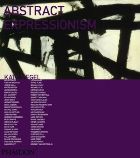By Katy Siegel, Lillian Davies & Pauline Pobocha
Phaidon Press, 304 pages, $75.00
In Abstract Expressionism, art historian Katy Siegel has assembled a definitive overview of the movement that emerged in New York City in the early 1940s and revolutionized modern art. Breaking away from the accepted conventions of the day, artists such as Arshile Gorky, Jackson Pollock, Mark Rothko, Willem de Koonig and many others pushed New York City into focus as the new center of the Western art world with their huge canvases and evocative abstract style. This book reveals the issues that drew the artists together, and traces their evolution into the development of this new language of expression. The authors also address the artists’ ambivalence at being associated with the movement, as well as the far-reaching consequences their work had on the world of art.
“Gathered mostly in New York City, they saw America — provincial, anti-intellectual, with little high culture — as the only possible location for the new art and an almost impossible place in which to make it.”
The book is divided into three sections, beginning with an analysis of the movement including its genesis and accomplishments. The second section showcases over 200 key examples of the artists’ work. The last section includes statements by the artists and texts by critics, historians, and curators. A full biography of each artist is included, as well as a bibliography. In this beautiful, oversized, full-color book, the reader will find a comprehensive survey of the first American movement to achieve international influence.
Reviewed by Diane Prokop
[amazon asin=0714844152&text=Buy On Amazon&template=carousel]

